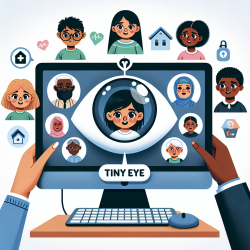Understanding Peripartum Depression and Its Challenges
Peripartum Depression (PPD) affects 10–15% of perinatal women in the U.S., with a higher prevalence among low-socioeconomic status (low-SES) populations. Barriers such as social stigma and lack of access to mental health resources exacerbate these disparities. Recent research highlights the potential of digital health technologies to bridge these gaps by offering tailored solutions for PPD management.
Research Insights: Digital Health Technologies
A study titled "Digital health technologies for peripartum depression management among low-socioeconomic populations: perspectives from patients, providers, and social media channels" provides valuable insights. It identifies six core themes for PPD management, including the use of technology, access to care, and pregnancy education. The study utilized focus groups, interviews, and social media analysis to gather data from low-SES women and their care providers.
Implementing Digital Solutions in Practice
For practitioners, integrating digital health technologies can significantly improve PPD management. Here are some actionable steps based on the study's findings:
- Utilize Technology Features: Encourage the use of mobile apps and online platforms that provide pregnancy-related information and mental health resources. These tools can offer personalized support and education, helping women manage their mental health more effectively.
- Enhance Access to Care: Implement digital communication channels to facilitate easier access to healthcare providers. This can include teletherapy sessions, online consultations, and messaging services for quick queries and support.
- Focus on Pregnancy Education: Provide comprehensive educational materials through digital platforms. This can include information on PPD symptoms, treatment options, and coping strategies, tailored to the needs of low-SES women.
Encouraging Further Research
The study underscores the importance of considering patient and provider perspectives in developing digital health solutions. Practitioners are encouraged to conduct further research to explore innovative ways to integrate these technologies into their practice, ensuring they meet the unique needs of low-SES populations.
Conclusion
Digital health technologies offer a promising avenue for addressing PPD disparities among low-SES women. By implementing data-driven solutions and engaging in ongoing research, practitioners can enhance PPD management and improve outcomes for vulnerable populations.
To read the original research paper, please follow this link: Digital health technologies for peripartum depression management among low-socioeconomic populations: perspectives from patients, providers, and social media channels.










